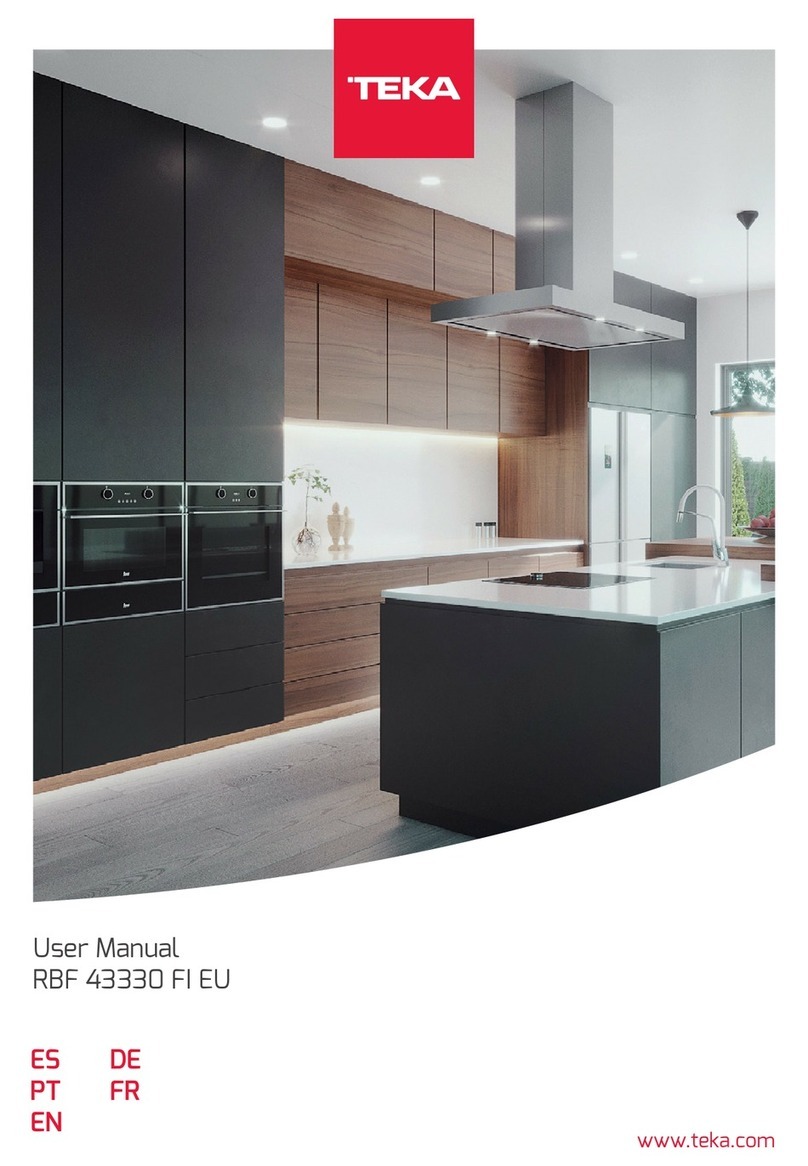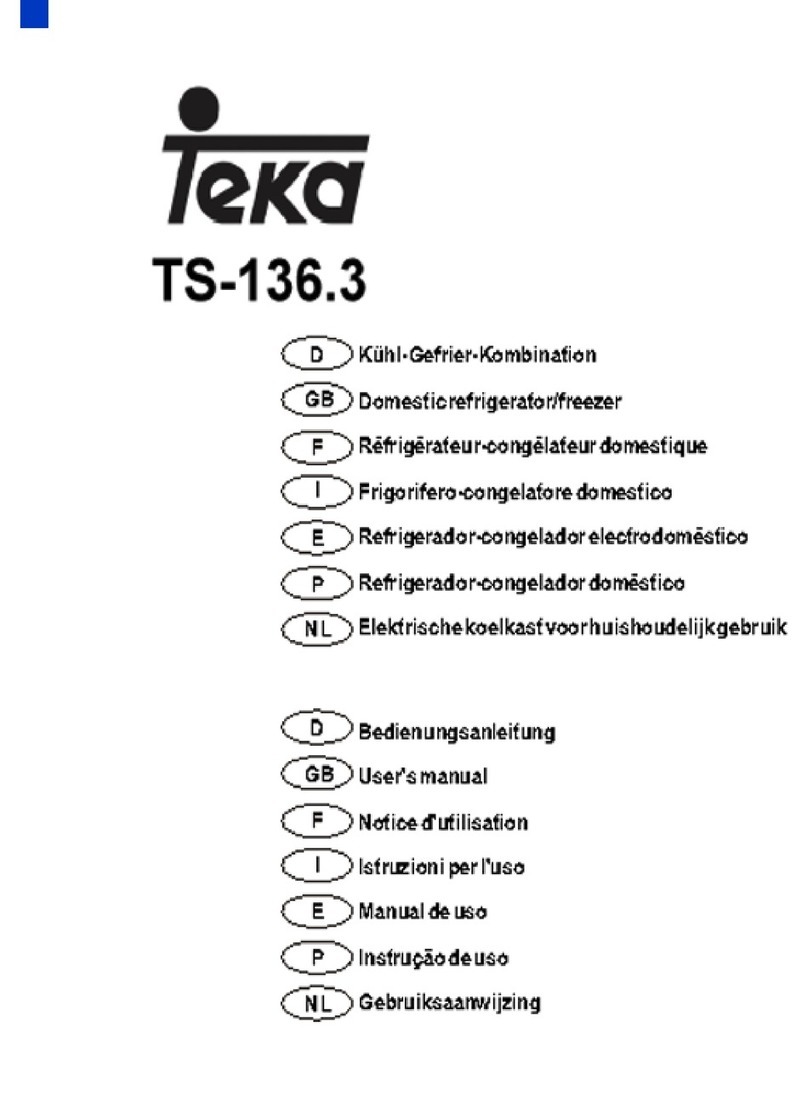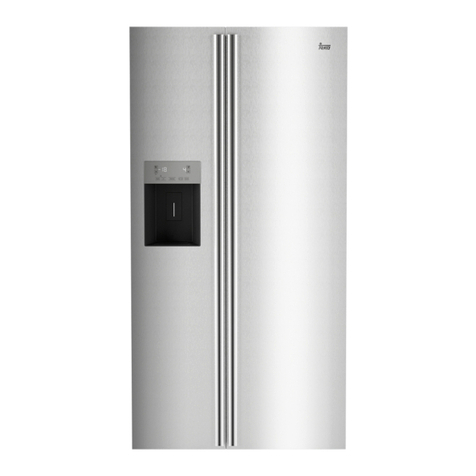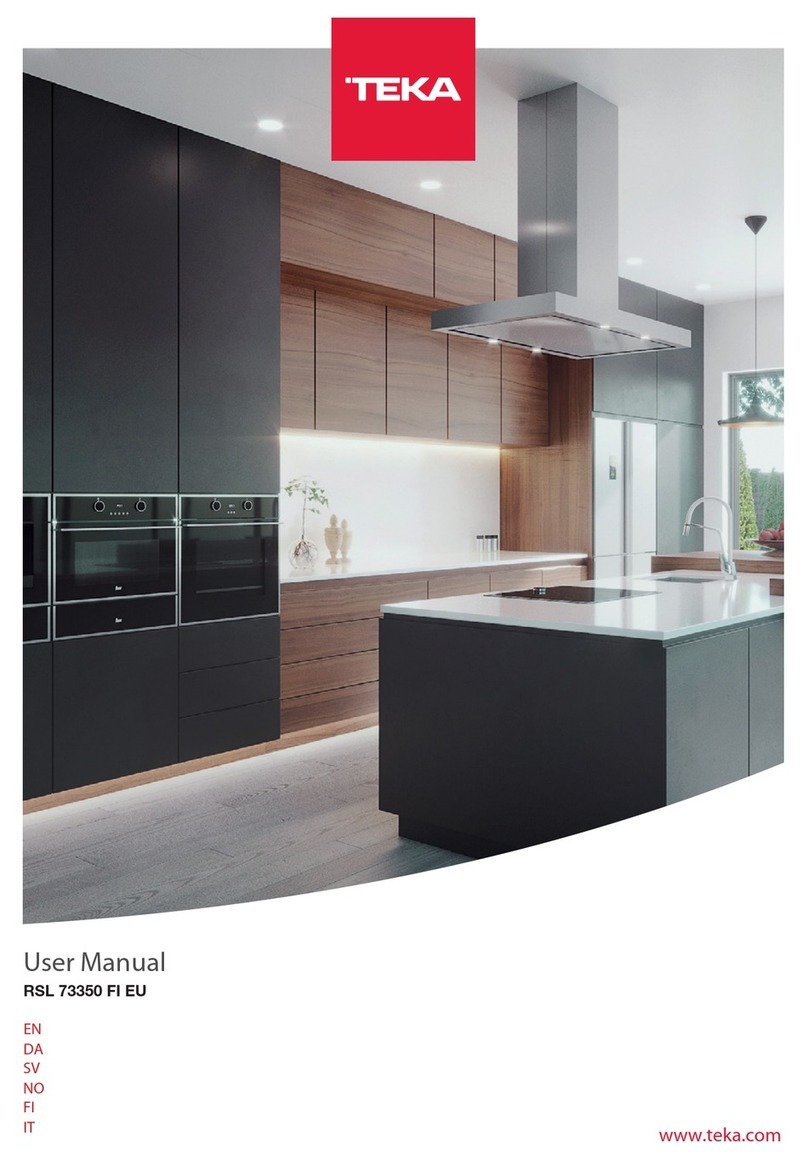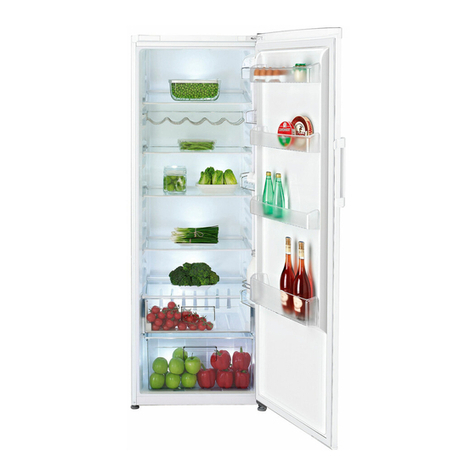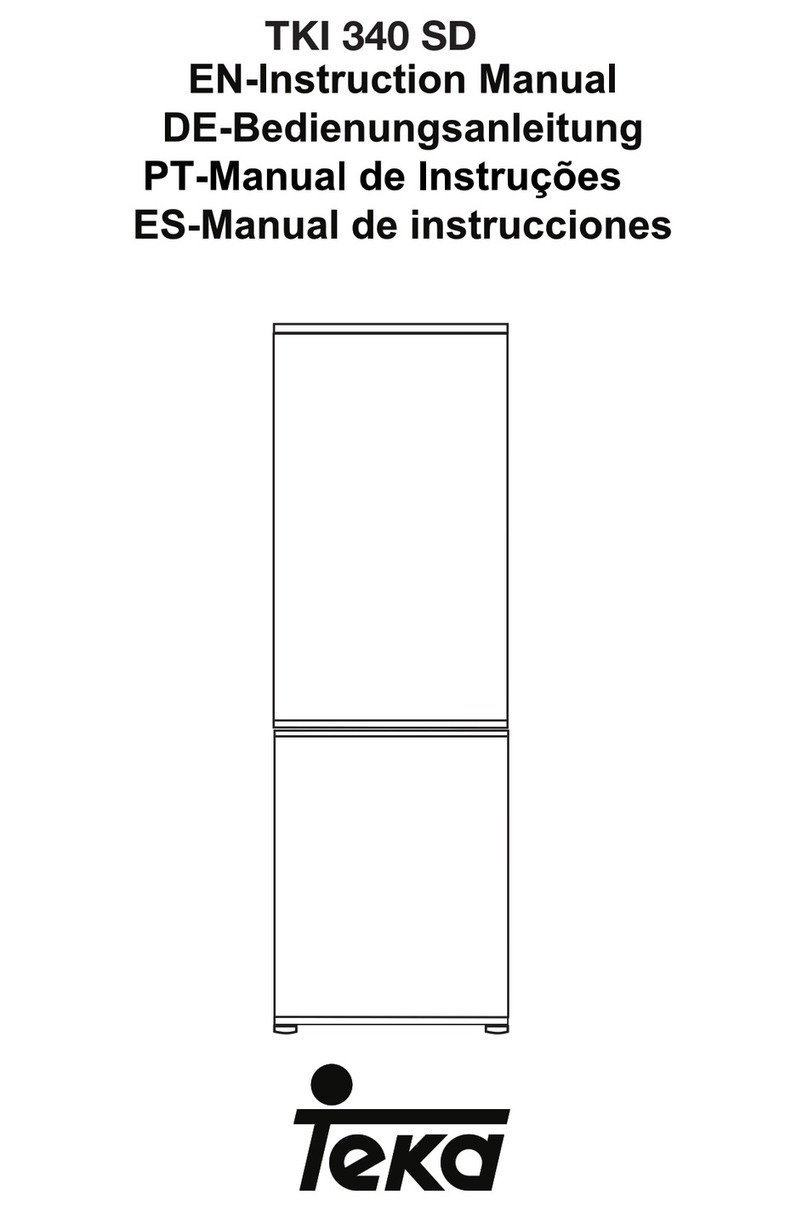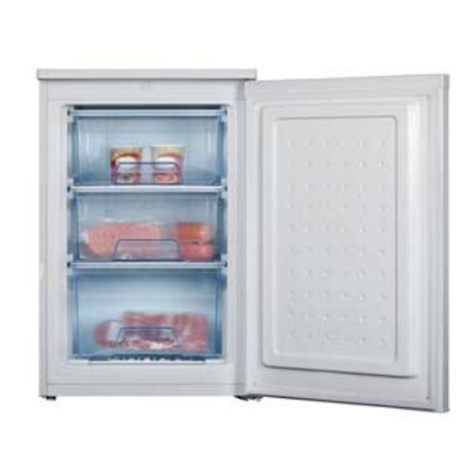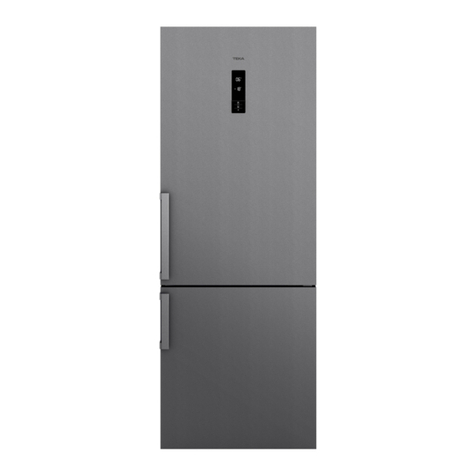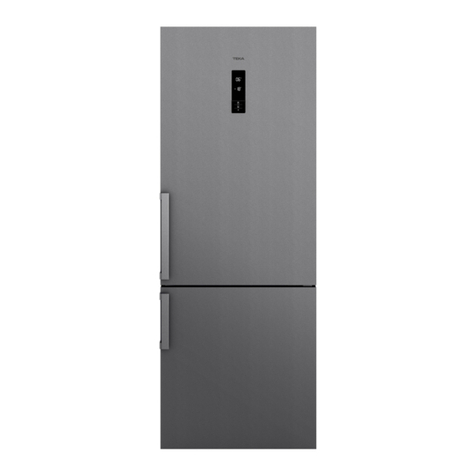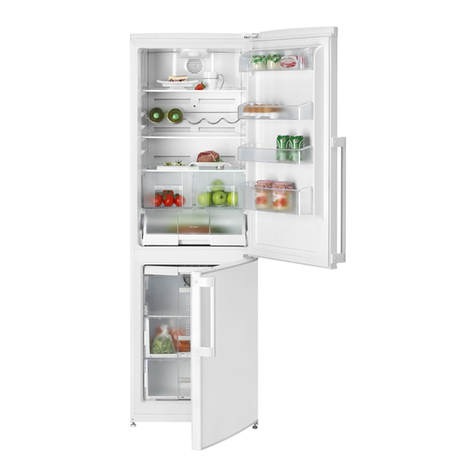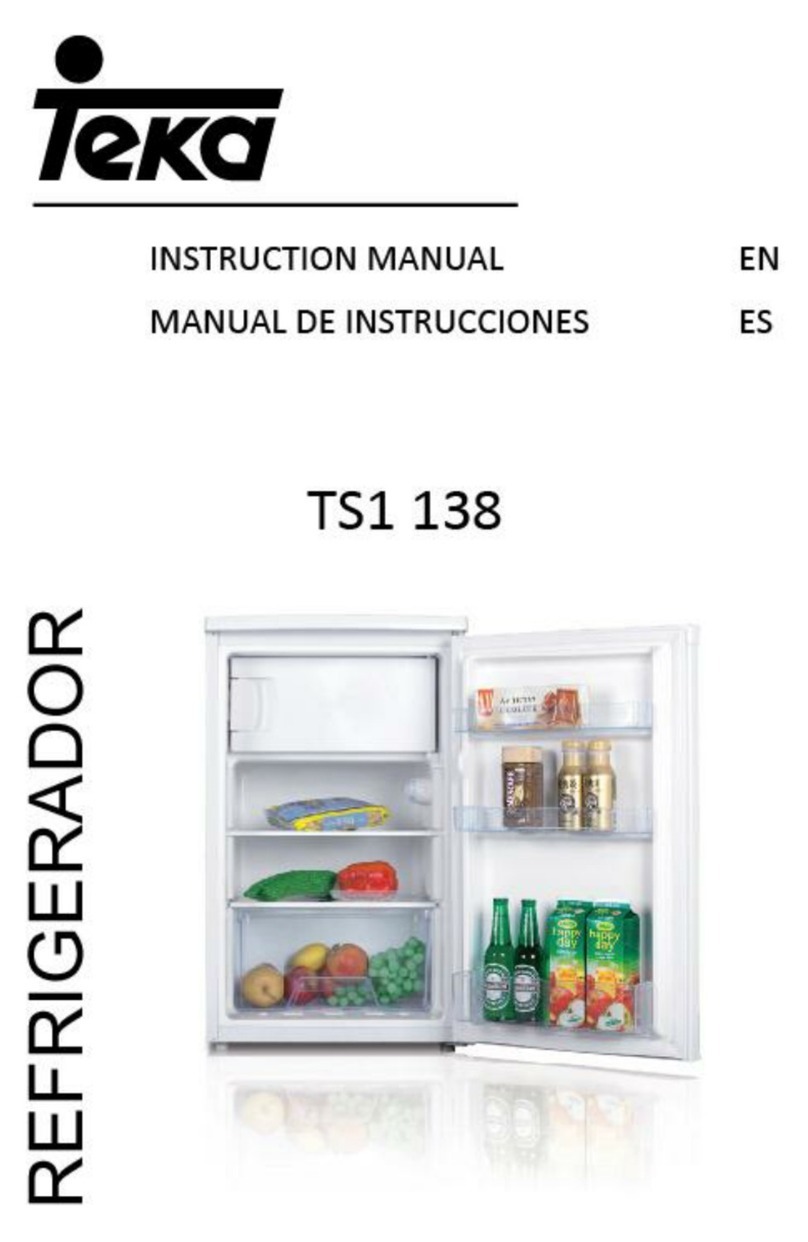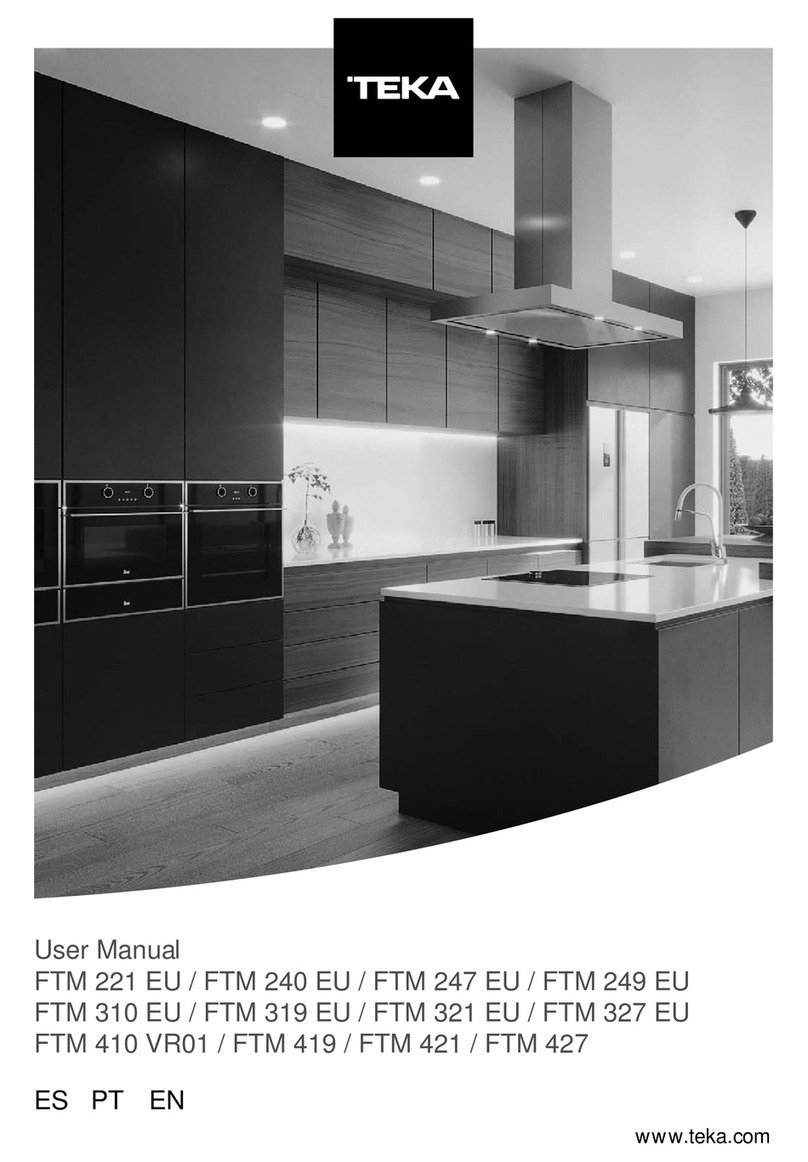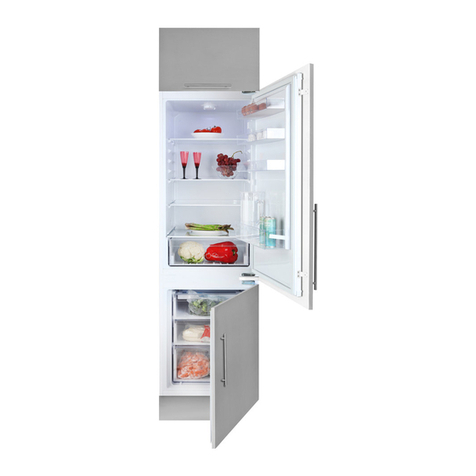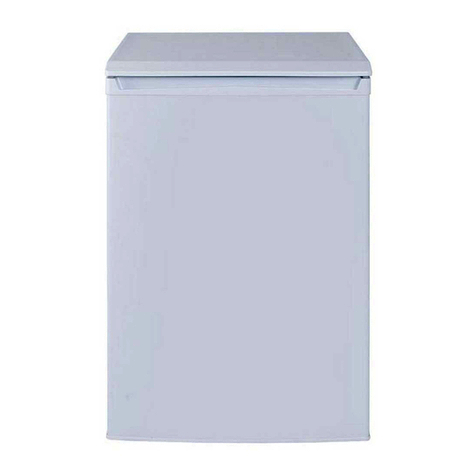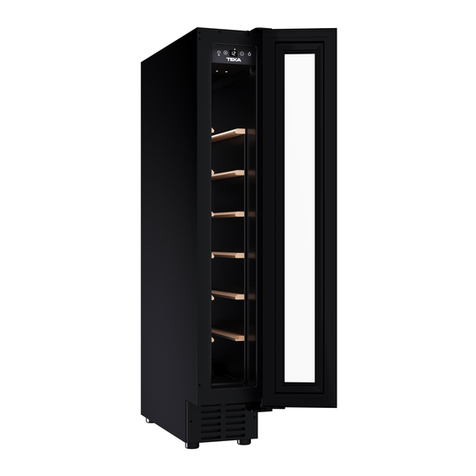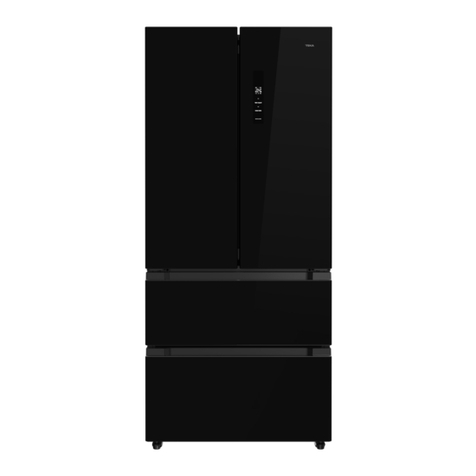
EN
6
• Donotplugtherefrigeratorifthe
electric outlet is loose.
• Donotsplashwaterdirectlyonthe
outer or inner parts of the refrigerator
due to safety.
• Donotsprayinflammablematerials
such as propane gas etc near
refrigerator due to the risk of fire and
explosion.
• Donotplaceobjectsfilledwithwater
on top of the refrigerator as it may
result in electric shock or fire.
• Donotoverloadtherefrigeratorwith
excess food. The excess food may
fall when the door is opened resulting
in injuring you or damaging the
refrigerator. Do not place objects on
top of the refrigerator as the objects
may fall when opening or closing the
refrigerator door.
• Materialsthatrequirecertain
temperature conditions such as
vaccine, temperature sensitive
medicines, scientific materials etc
should not be kept in refrigerator.
• Ifrefrigeratorwillnotbeoperatedfor
an extended period of time it should
be unplugged. A problem in electrical
cable insulation may result in fire.
• Thetipoftheelectricplugshouldbe
cleaned regularly otherwise it may
cause fire.
• Therefrigeratormaymovewhenthe
adjustable feet is not positioned firmly
on the floor. Using the adjustable feet
you can unsure that the refrigerator is
positioned firmly on the floor.
• Iftherefrigeratorhasdoorhandle
do not pull the refrigerator via door
handles when moving the product as
it may disconnect the handle from the
refrigerator.
• Ifyoumustoperateyourappliance
adjacent to another refrigerator or
freezer, the distance between the
appliances must be at least 8 cm.
Otherwise condensation may occur
on the side walls facing each other.
•Watermainspressuremustnotbe
below 1 bar. Water mains pressure
must not be above 8 bars.
• Useonlydrinkablepotablewater.
Child safety
• Ifthedoorhasalock,thekeyshould
be kept away from reach of children.
• Childrenshouldbesupervisedto
ensure that they do not play with the
appliance
HCA Warning
If your product is equipped with
a cooling system that contains
R600a:
This gas is flammable. Therefore, pay
attention to not damaging the cooling
system and piping during usage and
transportation. In the event of damage,
keep your product away from potential
fire sources that can cause the product
catch a fire and ventilate the room in
which the unit is placed.
Ignore the warning if your product
is equipped with a cooling system
that contains R134a.
You can see the gas used in production
of your product on the rating plate that
is located on the left inner part of it.
Never dispose the product in fire.
